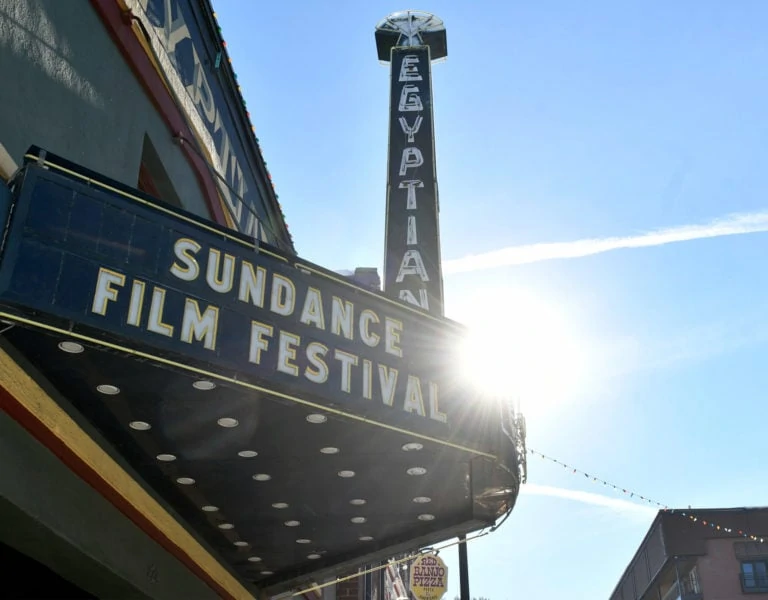Home » Features » Opinion » Award'oeuvres »

Immerse yourself in the awards season buzz with our brand-new column from Mark London Williams, with all the latest insight from Stateside.
Like opening the box with Schrödinger’s Cat in it, the possibilities of what (or who) might get nominated, and who becomes favourites in a given category, all keep collapsing inward, with each announced raft of nominations, or each early award show.
So when the Producers Guild revealed its slate of ten “best picture” nominees, which usually comports with the Academy’s, along with the Directors Guild, and DGA, and its even more Schrödinger-esque field of five (the old number of potential “best pictures,” before the Oscars expanded that category), it’s a reasonable bet that those in the “overlay” are the handful of now-frontrunners.
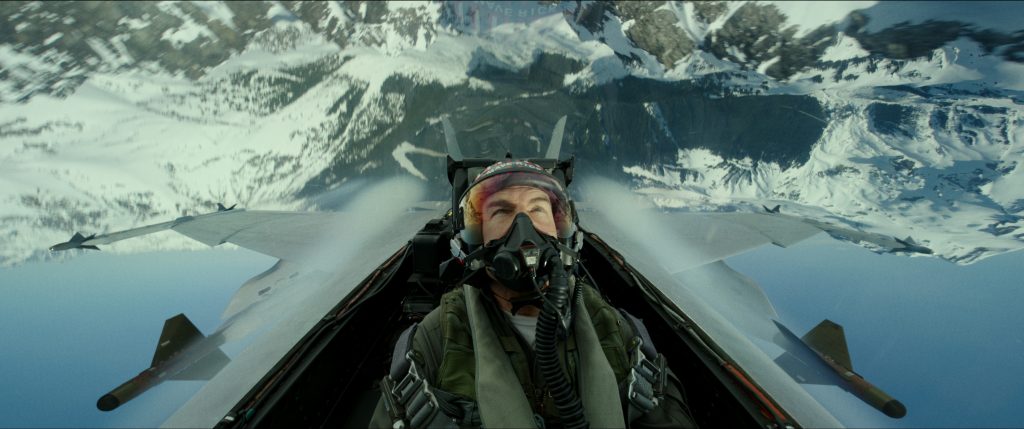
Though SAG’s version of “best picture”, which for them is the “best cast” award, also collapses that field somewhat differently, as their quintet includes the Day of the Locust-like Babylon, and the almost-single set, thoroughly engaging Sarah Polley adaptation of Women Talking.
The DGA’s awards includes pole-position films like The Banshees of Inisherin, Everything Everywhere All at Once, and The Fabelmans, along with Top Gun: Maverick and Tár, a favourite in the best actress field for Cate Blanchett’s performance.
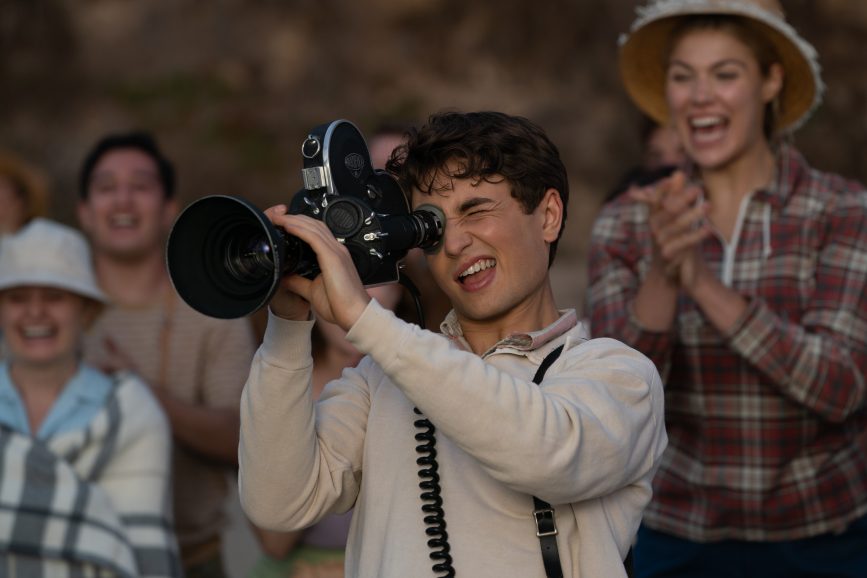
Other touted films, like Sam Mendes’ cinematic memory tale – which is to say, a tale of memories made in cinemas themselves – Empire of Light, seem to be, well, fading in the stretch, at least in the above-the-line categories, though what better moment, when discussing a movie about the intersection of entertainment and “real life” (as far as anyone can still make distinctions), to officially welcome you to this particularly themed buffet, Award’oeuvres!
Yes, the column formerly known as Across the Pond is now transformed ‘til spring, as we handicap and speculate on the award season unfurling around us. Towards that end, we aim to bring you some quick, tasty bites – perhaps shorter than traditional column items might have been – to help you make further sense of it all.
Towards that end, then, let’s start with:
BREAKFAST: FRY UPS vs. BREAKFAST BURRITOS: Or however else you want to parcel out distinctions on the UK vs. US sides of the pond. Each shore’s respective cinematographers’ society also sharpened those distinctions (“no, these really are baked beans on my breakfast plate, as opposed to the hash browns on yours!”) with their slate of feature film nominations, which often more closely align.
Ironically, the BSC’s Sir Roger Deakins CBE – also an ASC member – was only nominated for the UK-set Empire of Light by the Americans, who also nominated Darius Khondji ASC AFC for Alejandro Iñárritu’s Netflix-hosted memoir Bardo, False Chronicle of a Handful of Truths, along with Claudio Miranda ASC ACC for Top Gun: Maverick.
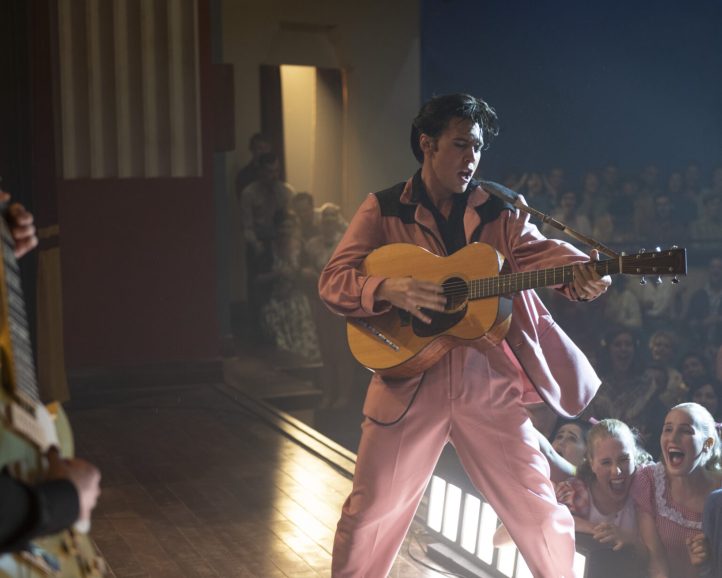
At least as far as the cinematographers themselves go! The BAFTAs were also announced as we were writing, (indeed, the only thing left now are the Oscar nods, and those will be out shortly after this goes live, and will either confirm, or totally upend, much of the calculus here. We’ll discuss that in the next round!) And with the BAFTAs, Sir Roger is right back home, in a list that almost exactly replicates the ASC’s, including nods for last year’s Oscar winner, Greig Fraser ASC ACS for his noirish tones on The Batman, and on Mandy Walker AM ASC ACS’s visual Memphis-to-Vegas journey for Elvis.
The only difference was in swapping out Bardo for another Netflix offering, James Friend ASC BSC’s lensing of All Quiet on the Western Front, also a nominee in BAFTA’s best “films not in English” category. As for the BSC, the other variants on their list were nominations for The Banshees of Inisherin’s Ben Davis BSC, and in a bit of a surprise, Florian Hoffmeister BSC for Tár.
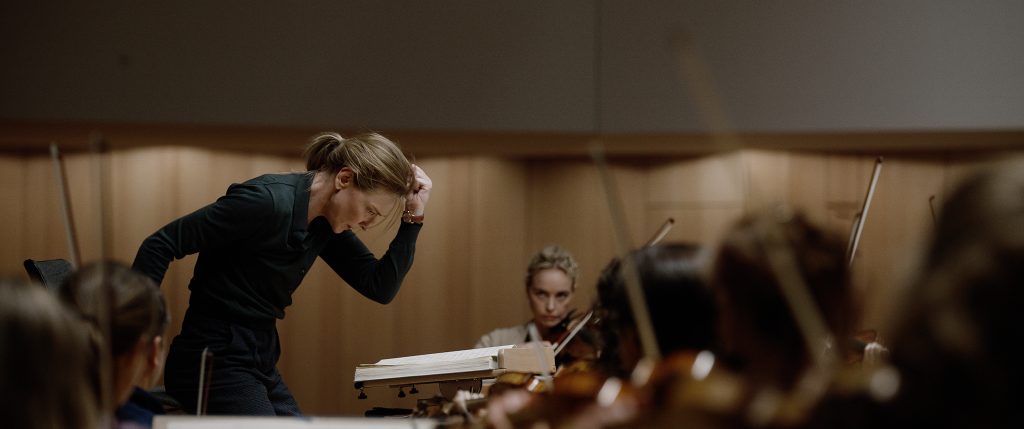
Miranda, then, remains a likely favorite on the Oscar side, despite not being on the BSC list. But even in seasons where below and above-the-line momentum start to diverge for different pictures, there’s still little doubt how the crafts and skills from one department contribute to eventual statue-in-hand success for the others, whether writer, director, or actor.
Such as Hoffmeister’s now-nominated work in support of Blanchett, especially in light of her Golden Globe win, with the film aided and abetted by other craft nominations from the ADG and Costume Designers Guild.
Which brings us to:
LUNCH: IMPLEMENTS MATTER
Especially when we’re talking about the very ones used to capture the performances around which those above-the-line award campaigns are built.
So if Blanchett is the frontrunner for best actress (well, along with Michelle Yeoh, who also won on Golden Globe night, in their musical/comedy category for Everything Everywhere All at Once), her counterpart would likely be Brendan Fraser in The Whale, who also picked up a Critics Choice award (along with Blanchett).
On which note, speaking of the “actor” / “actress” differential, this year the Independent Spirit Awards collapsed their own acting award into a single category – no gender differentiation. Blanchett and Yeoh are nominated there as well – but no Fraser! (No Whale in any category at Indie Spirits). But it does make one wonder what the Academy – and SAG – might eventually do about their own current binary gender divisions, and whether there will eventually be a single “actor” category (separated for lead, and supporting, roles). And if so, will that reduce the total number of awards? Would they give out statues to the “top two?”
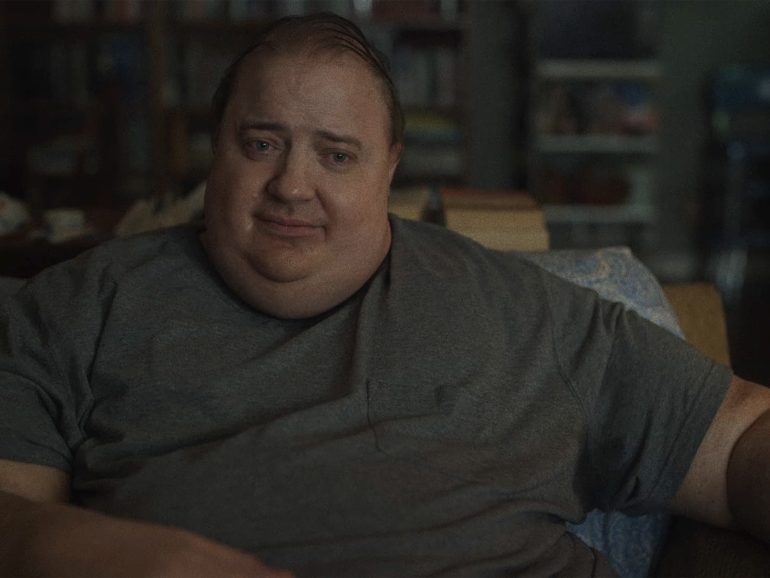
But acting accolades aside, what of those contributions made by other key creatives, even if they wind up unheralded in the broader awards rondel?
So it is that another of our “Bites” comes in a talk with Matthew Libatique ASC, a long-time collaborator with Whale director Darren Aronofsky (and previous Oscar nominee for Black Swan, and more recently, A Star is Born). “You’re talking about someone who prefers 16mm to 35mm,” he laughs about Aronofsky, while underscoring that this was the director’s “first digital film”. Shot on a Sony VENICE, “the first one”, along with Angénieux Optimo Primes there is “a lot of heavy grain on the film… keeping in mind what Darren loves about 35 mm”.
“My DIT, Jeff Flohr, and I built a LUT together,” he says, that helped make those digits as “filmy” as possible, but Aronofsky also discovered – perhaps not accidentally, in a film lauded for its performances – that he “loved being able to see” what the camera had captured, along with the ability to keep “rolling on, and rolling and rolling…”
New ways of working were, in a sense, normal for the longstanding collaboration. “On everything we’ve done, it’s been so different,” Libatique says, citing films like Noah and Mother!. So, when it came to shooting an adaptation of a play, still unfolding in a single location, the trick was “stepping aside and letting those performances happen”, and then figuring out “what (we’re) going to do with the camera”. Some of that was helped by the use of a Ronin gimbal. Not simply because of potential camera moves, but rather “we could limit the amount of bodies near the actors,” during the COVID protocols in place when the film was shot.
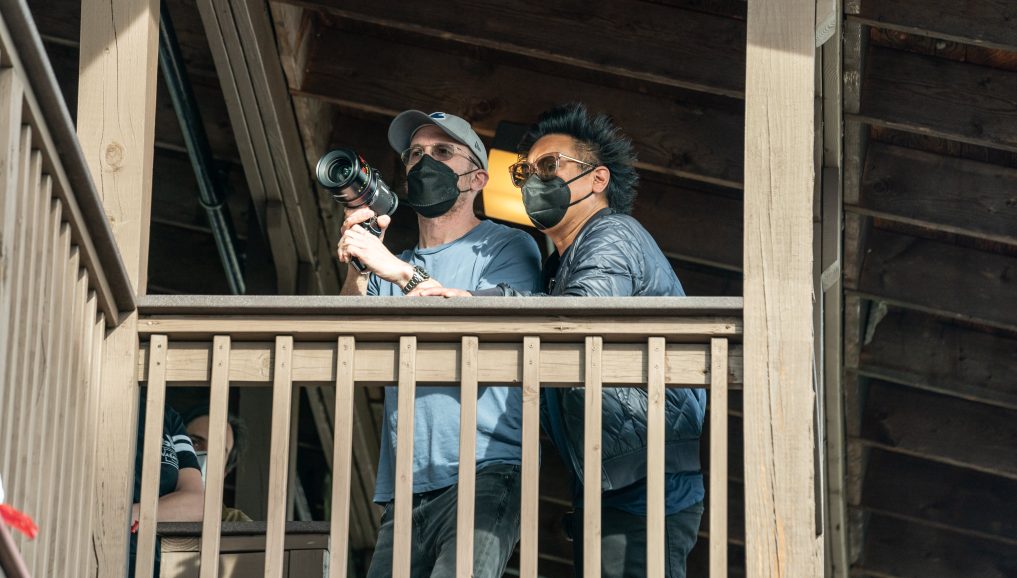
But camera, gimbal, and all, was able to “react” to what Fraser, and the rest of the cast, were all doing on that single set. That included the choice of a traditional aspect ratio, as well, which gave them “a little more bottom (and) ended up paying dividends in close-up”. The verticality was a benefit, especially since “we didn’t have as much left and right in the composition.”
The code that had to be cracked,” he summarises, “was how we’re going to tell this story. How honest we’re going to be (along with) how we used blocking and staging, so it became less stationary.”
Though sometimes, if what you’re serving up is an extravaganza on the opposite end of the scale, that “code cracking” begins well in advance. Which brings us to:
DINNER: PLANNING AHEAD FOR ALL THE GUESTS
When the Costume Designers Guild gathers in February, their career achievement award will go to Deborah L. Scott, an Oscar winner for Titanic, and long-time creative partner with director James Cameron, having worked on the first Avatar, and finding herself a CDG nominee, in the sci-fi/ fantasy category for the film’s long-gestating The Way of Water sequel.
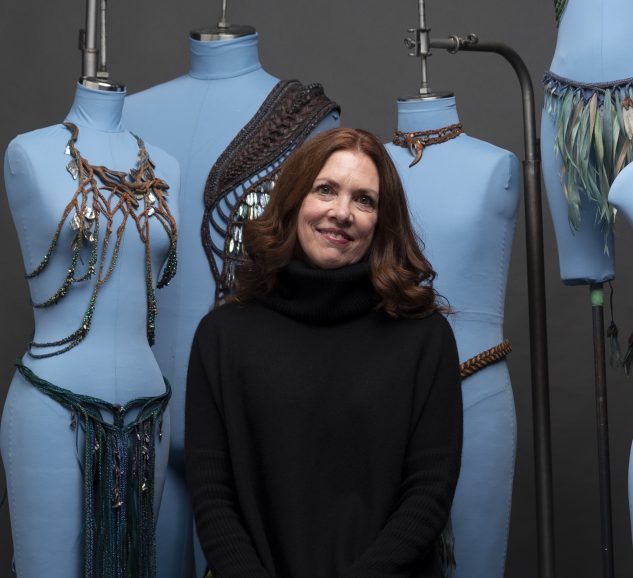
She reiterated to us that “all the costumes, props, accessories, and wigs were physically built, before eventually being rendered”, allowing for enhanced realism, and a more deeply textured sense of Na’vi culture, during the rendering.
Her own working collaborations would seem likeliest, on the Oscar side, to put senior visual effects production supervisor Joe Letteri and his extensive VFX team, in the catbird seat for that award, especially given the record-breaking 14 nominations the film garnered in the just-announced Visual Effects Society award field.
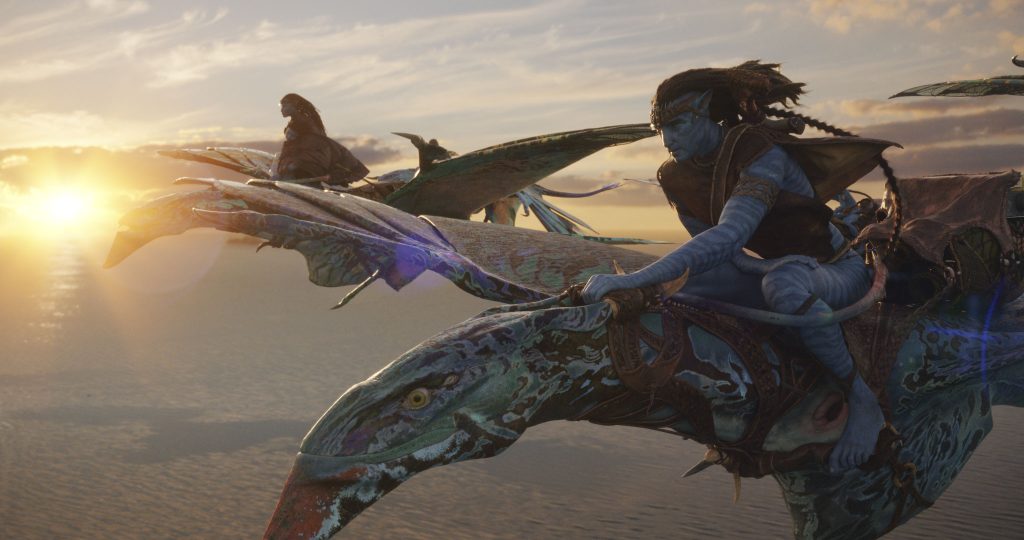
“We all together did the world-building,” she says, “then I was tasked with the clan-building and the character-building. As I produced the designs, we started to build the costumes and accessories…Eventually, as the pipeline was established and Cameron shot, edited, and turned over scenes, I would follow the designs and samples and an extensive amount of reference shooting through the digital pipeline, with the artists and animators assisted by the VFX team.”
Scott also talks about collaborating with cinematographer Russell Carpenter ASC, another longtime fixture on Cameron films, and another Titanic Oscar winner.
“Russell and I had more constant and direct contact on the live-action portions, as the digital work was often done on different schedules, but it was very important for us to know what each other was doing and for me to know about the digital lighting was (also) extremely important, in terms of design and colour. From the cinematographer’s standpoint, I think Russell needed to understand what the virtual costumes would look like in order to light them properly, what the materials were and how much of the frame a costume or headdress would take up.”
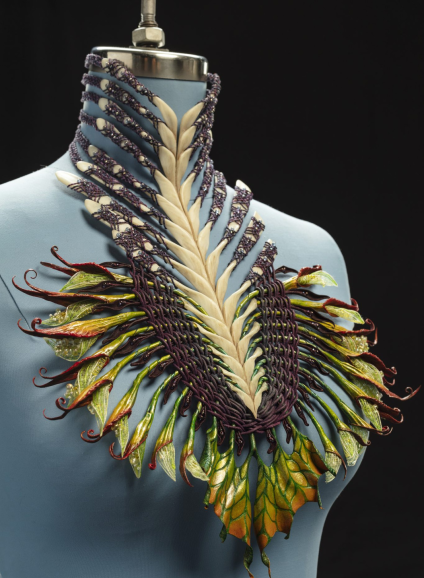
Nor, even with so much AI in the news, does she think this trend of “build first, and render later” is going away anytime soon. “In order to render things well digitally, they have to be made, especially with bespoke and unique costumes, like in Avatar. We already use digital methods of tiling extras for large scenes, but there still needs to be a practical costume of origin.”
Similar to how Cameron shot the actual actors, in actual water, before digits made them taller, bluer, and all living off-world.
Which gets us to:
A WEE BIT OF DESSERT
In the run-up to all the actual nominations, there are, of course, screenings, receptions, Q&As, and generally lots of finger food, to help spread the word on given films – both the favourites, and those too little seen – in the hopes they wind up on as many award ballots as possible.
One such event recently was a full Saturday afternoon for Glass Onion, at one of Netflix’s locations in a gentrifying Hollywood, which included not only a showing of the movie, but several panels with key department heads, and eventually writer/director Rian Johnson himself, who wished everyone a “Happy Glass Onion day, to all who celebrate.”
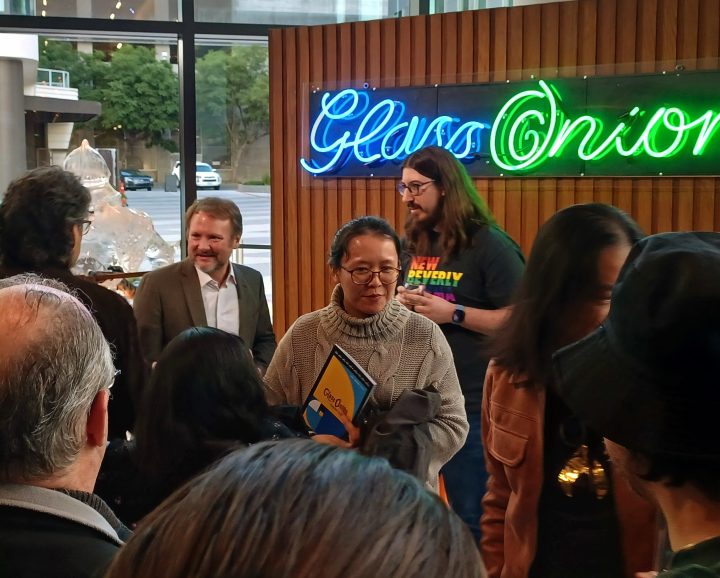
The film, a PGA “best picture” nominee, which could also sneak in to the expanded Oscar field, has been garnering its share of craft nominations too, and in talking about shaping his drawing room-cum-tech billionaire-island murder mystery, Johnson said that if Agatha Christie herself was writing today, she would also include said billionaires, YouTube “influencers,’ and other such recently minted celebrities among the range of suspects in one of her own whodunits.
He also talked about working with his DP, Steve Yedlin ASC, who he’s known since Johnson was in high school (and who, he added, “took pity on me, and showed me how to load an Arriflex”), praising his ability to help turn master shots into close-ups into inserts, all on the same take.
The theme of newly-minted celebrities was also picked up by director Damien Chazelle, who showed up unexpectedly at an FYC screening of Babylon, during a break in the recent string of both holidays and rainstorms.
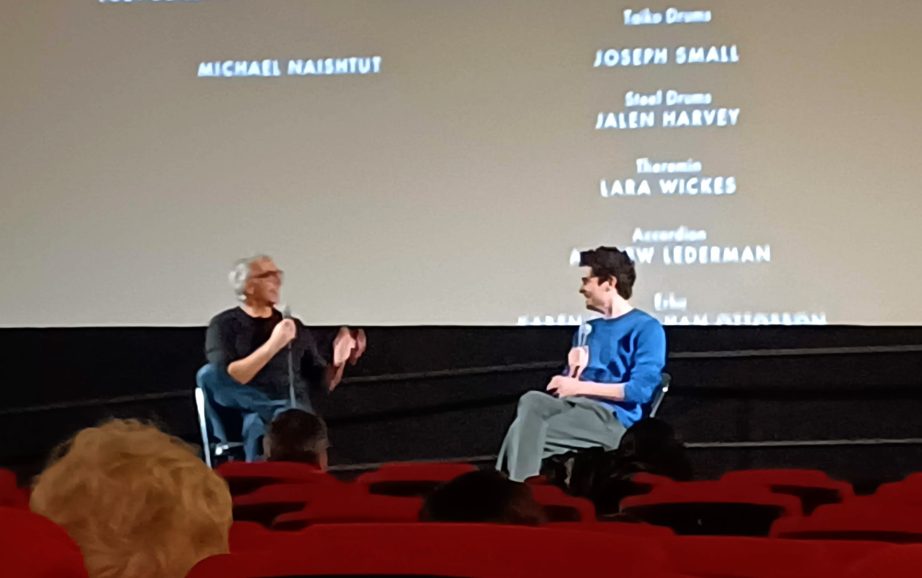
In the Q&A after, he talked about new categories of fame created by movies themselves, a hundred years ago, along with one of the subjects of his story — the seemingly terrifying change from silent films, which had just begun to reach a kind of maturity, to “talkies”, sparking a fear of displacement among those early stars.
He thought this was analogous to the current shift in “the way movies are consumed”, exacerbated by the pandemic – and what that means for the kinds of films that get made, and for whom. But he also talked about the “constant change” Hollywood has always faced, including the arrival of TV itself, in the early 1950s (about which, more on “TV” in upcoming dispatches, since nearly every award gathering referenced here, except the Oscars, all have television categories as well).
Though even in the best of times, Chazelle allowed, making a film – any film – “always feels like this irrational enterprise”.
Which may be as good a way as any to sum up these several weeks of award season, too.
Until next time.







